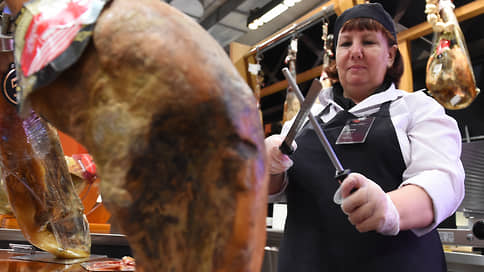Small business returned to January
[ad_1]

The RSBI Small and Medium Enterprise (SME) Sentiment Index shows record levels of investment activity in this sector in August: entrepreneurs see opportunities to expand their business in the face of sanctions restrictions. The increase in investments ensured the return of business activity of SMEs to January indicators, and the data of the Central Bank on the expansion of its foreign currency loan portfolio in the context of relatively low interest rates also testify to the recovery in the sector. Meanwhile, small business optimism may be overstated amid data of declining consumer activity – although SMEs report improved sales, accumulated pent-up demand has already been realized, analysts warn.
The August measurement of the mood of small and medium-sized businesses as part of the definition of the RSBI index (calculated by PSB, Opora Rossii and Magram Market Research) indicates a recovery in business activity in this sector: the indicator rose from 51.1 points to 53 points over the month. As a result, the activity of SMEs caught up with the figures for January (53.1 points) – since then, we recall, the business mood of entrepreneurs has worsened due to the start of a military operation and the introduction of new sanctions.
The growth of the index was accompanied by an improvement in all measured indicators – revenue, investment and personnel activity, and the availability of loans. Thus, the sales component continued to recover, exceeding the January level: entrepreneurs began to complain less often about a decrease in revenue (42% of respondents versus 48% in July) and more often reported its growth (18% versus 14%). However, assessments of future prospects in the sector are still restrained – 26% of respondents expect sales growth, as well as decline. The credit component grew due to the growth in the number of SMEs with approved loans – from 12% to 14%, including against the backdrop of the launch by the government and the Central Bank of a preferential program to stimulate the investment activity of small businesses based on accelerated import substitution.
Growth in sales and increased availability of credit ensured the effect desired by the authorities: the investment activity of SMEs hit a new all-time high (the indicator rose from 57.7 points to 60.6 points).
The share of entrepreneurs increasing their investments amounted to 23%, reducing – 7% (20% and 10% in July). The SME sector intends to further increase investment – 30% against 27% a month earlier. The data on personnel policy show different strategies of SMEs: in August, entrepreneurs began to both hire new employees (13% vs. 10%) and reduce staff (18% vs. 16%). As explained in the PSB, the most actively increased the staff of medium-sized enterprises in the manufacturing sector.
It should be noted that the growth of investment activity of small and medium-sized businesses for the second month in a row occurs against the backdrop of a slowdown in investment by large businesses. The SME sector is faster than large companies to adapt to changes. The growth of its investment activity is indirectly confirmed by the recent data of the Central Bank on lending to small businesses: the regulator reported an increase in the volume of foreign currency loans issued – from 182 million rubles. in June to 90.9 billion rubles. in July. The strengthening of the ruble allowed entrepreneurs to purchase affordable imported equipment at a favorable rate.
Meanwhile, the success of small businesses in an effort to occupy niches after the departure of foreign companies may be hampered by a decrease in consumer activity. In September, analysts have already recorded a decline in overall consumer spending, assuming that the accumulated pent-up demand was small and has already been realized (see Kommersant from 9th of September, 12-th of September and September 13). Lending to citizens can partially support demand, however, the volume of total household debt in 2022 is significantly lower than in 2021 (by 2 trillion rubles).
[ad_2]
Source link






